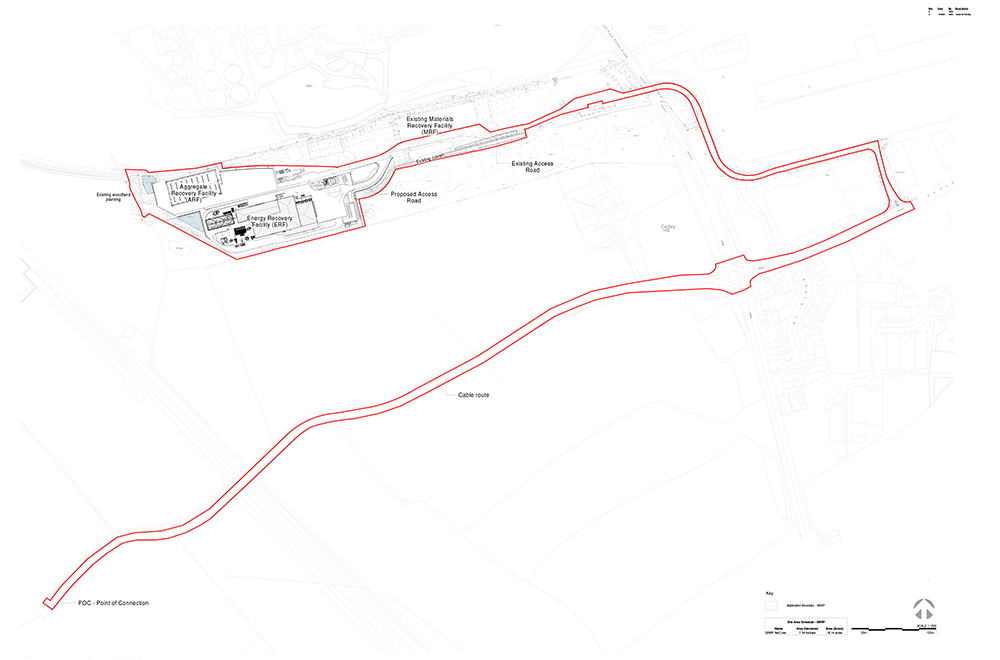Swadlincote
Resource
Recovery Park
The Proposals
The Location
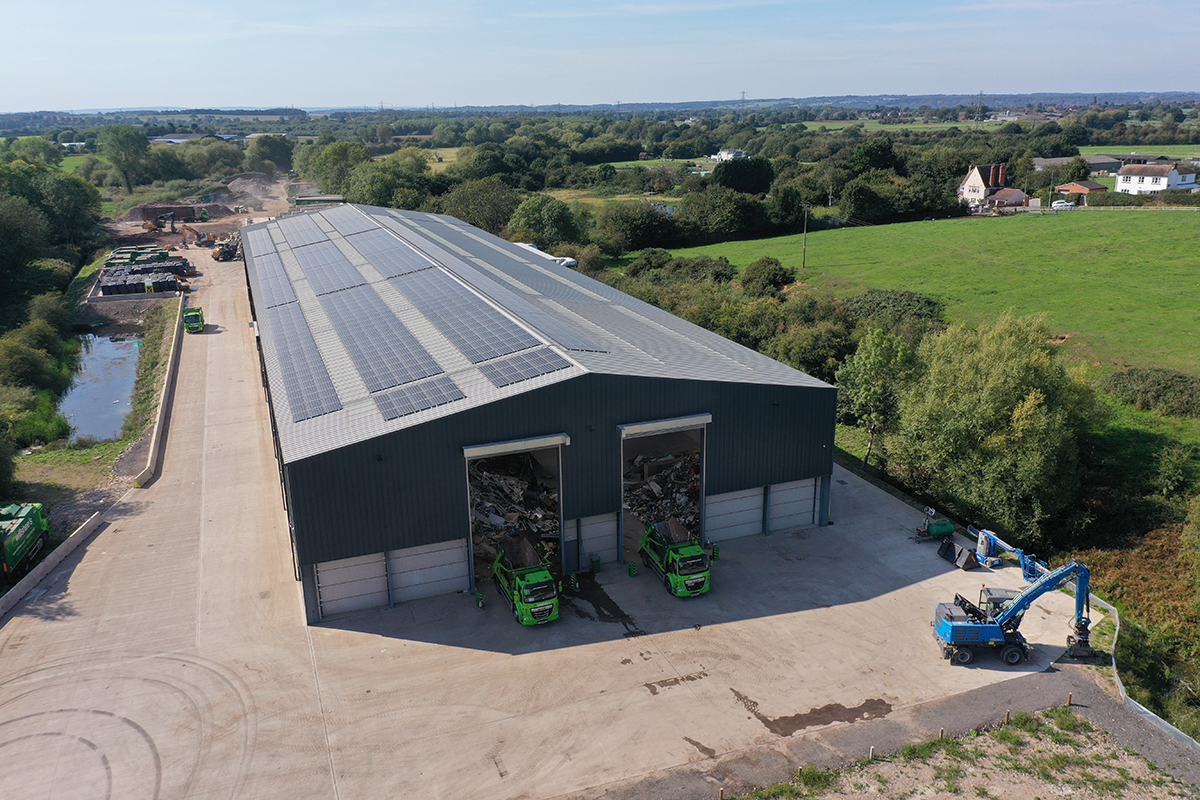
Wilshee’s Materials Recovery Facility
Historically Depot 3 was a coal transfer station, helping to transfer coal to power stations around the country. The Energy Recovery Facility seeks a new low-carbon way to generate electricity as part of a green waste management hub, helping to combat climate change.
Offering an existing access from Cadley Hill Road, through Keith Willshee Way, the site lies adjacent to the Appleby Glade Industrial Estate on the far side of the A444 and immediately south of the Swadlincote Water and Sewage Treatment plant.
Together with the existing on-site Willshee’s Materials Recovery Facility and the proposed Aggregate Recovery Facility, this will become the Swadlincote Resource Recovery Park.
An environmental permit is already in place for Willshee’s state-of-the-art Materials Recovery Facility which opened in 2020. It uses a sophisticated system of shredding, screening, air separation, magnets, and near-infrared technology to extract recyclable materials from general waste. The remaining output from the Materials Recovery Facility, referred to as Refuse Derived Fuel or “RDF”, would be processed in this new Energy Recovery Facility to generate low-carbon energy, closing the loop on effectively managing waste through recycling and reuse.
The benefits of this location include:
- Well located, easy to access site with excellent transport links.
- Close proximity to connect to the electricity network.
- Opportunity to supply low-carbon electricity and heat to the businesses on the adjacent industrial estate, Materials Recovery Facility and the Aggregates Recovery Facility.
- With waste processing happening next door, Willshee’s will provide up to 70% of the RDF from its adjacent Materials Recovery Facility and nearby Derbyshire depots, helping to reduce vehicle movements.
- Potential to process the sewage sludge from the adjacent water treatment plant, reducing vehicle movements with a local supply of fuel (this waste is currently transported to Birmingham for processing).
- Opportunity to deliver an on-site Aggregates Recovery Facility alongside the Energy Recovery Facility to recover the by-products (bottom ash and metals) for reuse as construction and road repair aggregates and metal recycling, fully closing our waste loop.
Project Plans
A functional design, aimed at keeping the mass to a minimum, is proposed in order to reduce the visual effect of the facility. A variety of colours on the façade were considered as well so that it blends more with the surrounding landscape.
The ‘earth mosaic’ cladding theme selected, incorporating feedback received from the general public, is based on the principle that the irregular pattern of panels in muted brown and greens, merging into pale blues, greys and off-whites above, helps to ground the built-in form and assimilate the structure into the wider landscape context.
The images shown below represent the appearance patterns considered in each of the colour schemes.
Block
The Block pattern breaks the envelope down into individual building elements.
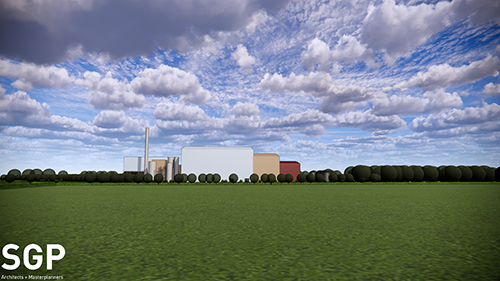
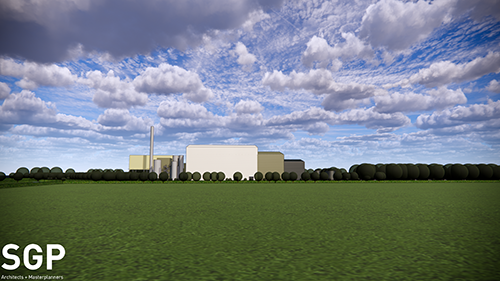
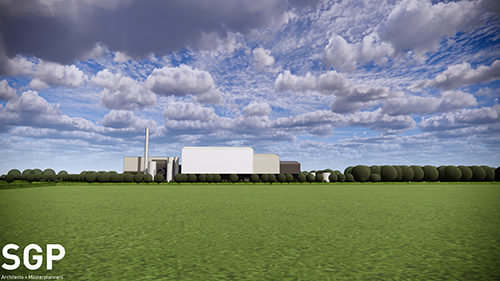
Recessive
The Recessive pattern has darker colours at the base gradually getting lighter the higher up the elevation.

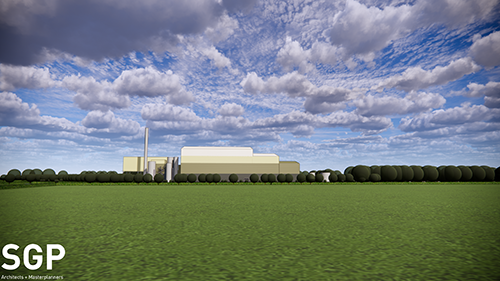
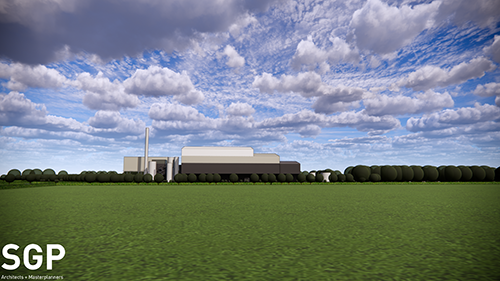
Mosaic
The Mosiac pattern consist of randomly placed contrasting colour blocks which serve to conceal an irregular footprint and also break down the building mass.
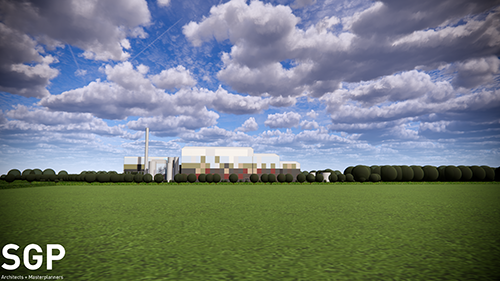

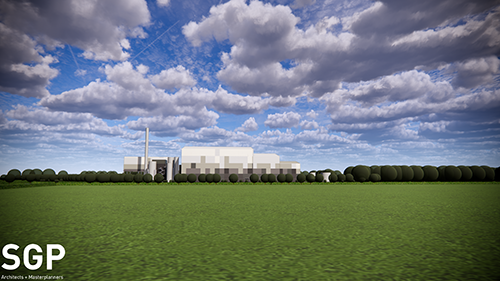
The Technology
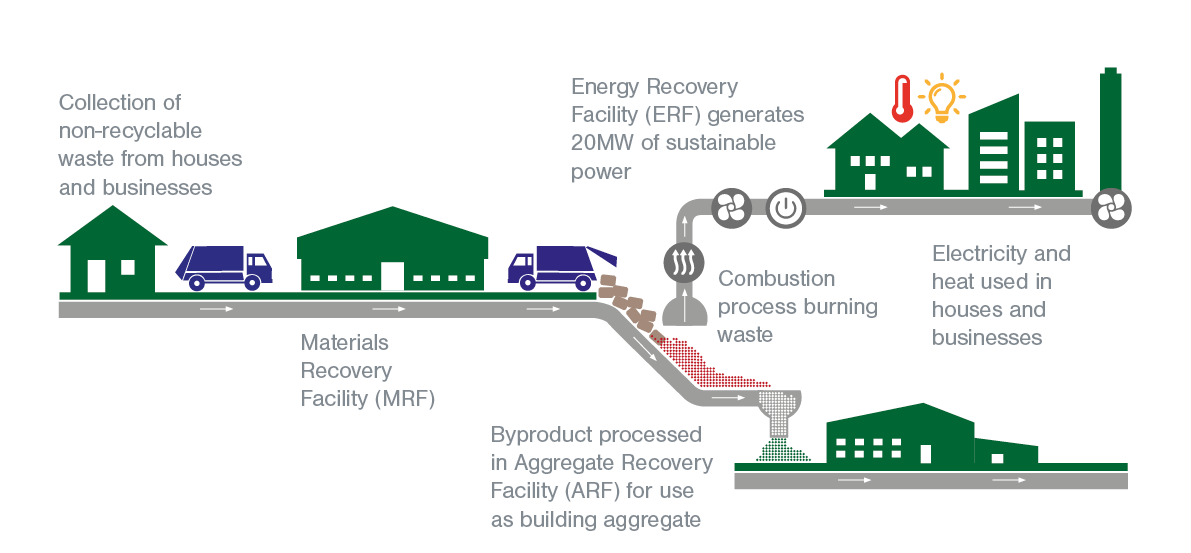
Energy recovery is safe and clean and there are more than 50 sites in the country successfully putting our waste to good use in this way in order to create a low-carbon and safe source of energy.
Using post-recycled household and Commercial & Industrial waste, treated at high temperature in a carefully controlled way, steam is created to drive a turbine to generate electricity. The heat generated can also be supplied to local businesses.
It is an advanced, conventional and well-proven technology, employing the best available techniques to ensure a clean generation process.
Managing Air Quality
As with all similar facilities around the UK, this would operate strictly in accordance with an Environmental Permit which is regulated by the Environment Agency. This permit controls all operations and will only be granted if the Environment Agency is sure that there will be no adverse effects on the local community and environment. Once a facility is built, the Environment Agency will continue to continuously monitor its operation and emissions.
All potential environmental affects have been assessed as part of the comprehensive planning application process. The full planning application suite of documents, including the Environmental Statement and air quality assessment, is available to view on the Derbyshire County Council website.
In order to meet the robust standards under UK laws, the facility will be fitted with advanced technologies and employ Best Available Techniques (BATs) which are the best for minimising emissions and impacts on the environment.
This is monitored at the facility but also by the Environment Agency and they have the ability to instantly close any facility if they are unhappy with its operation.
It is a fully sealed system and there are no discharges to the land or river. There is one single flue chimney and the discharge from this is extensively cleaned and scrubbed to a level which is better than the Environmental Agency allowable standards. This ensures that what is released into the atmosphere is safe and will not harm the local environment or anyone’s health.
Get in touch
We welcome your comments prior to a planning application being submitted please complete our comment form below. You can also contact the team by email click here
If you wish to complete our questionnaire it can be downloaded here
